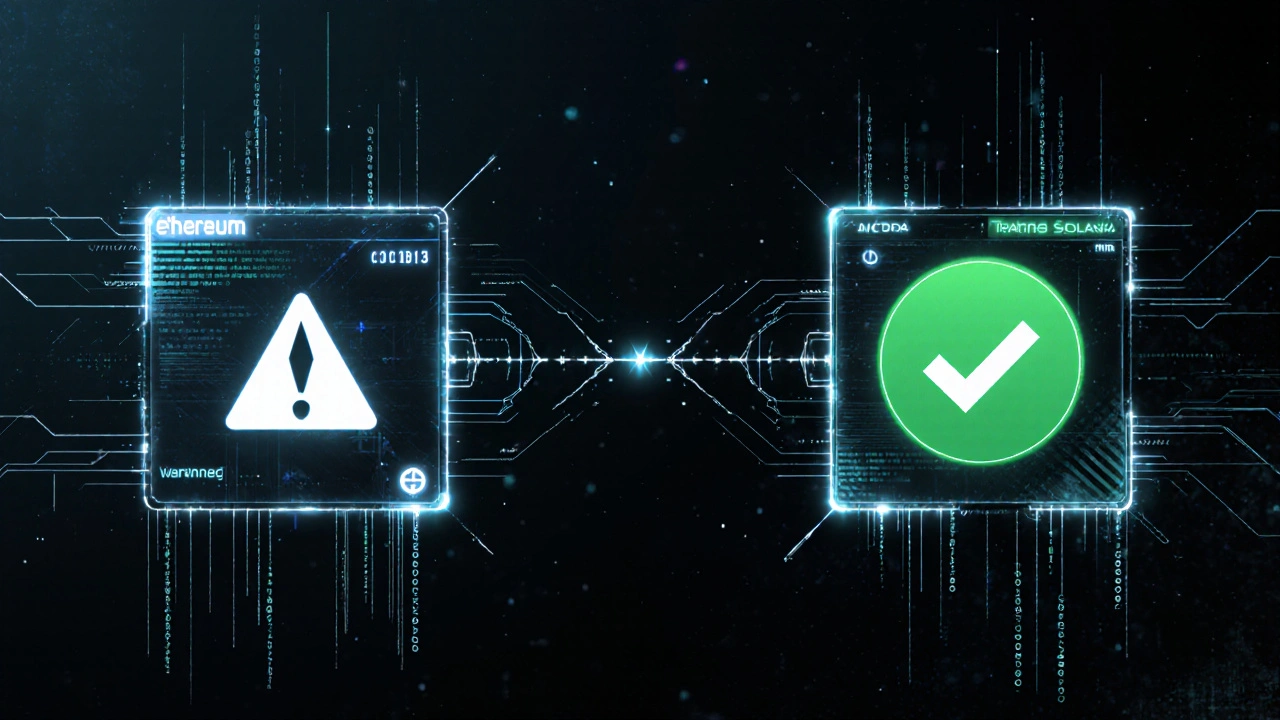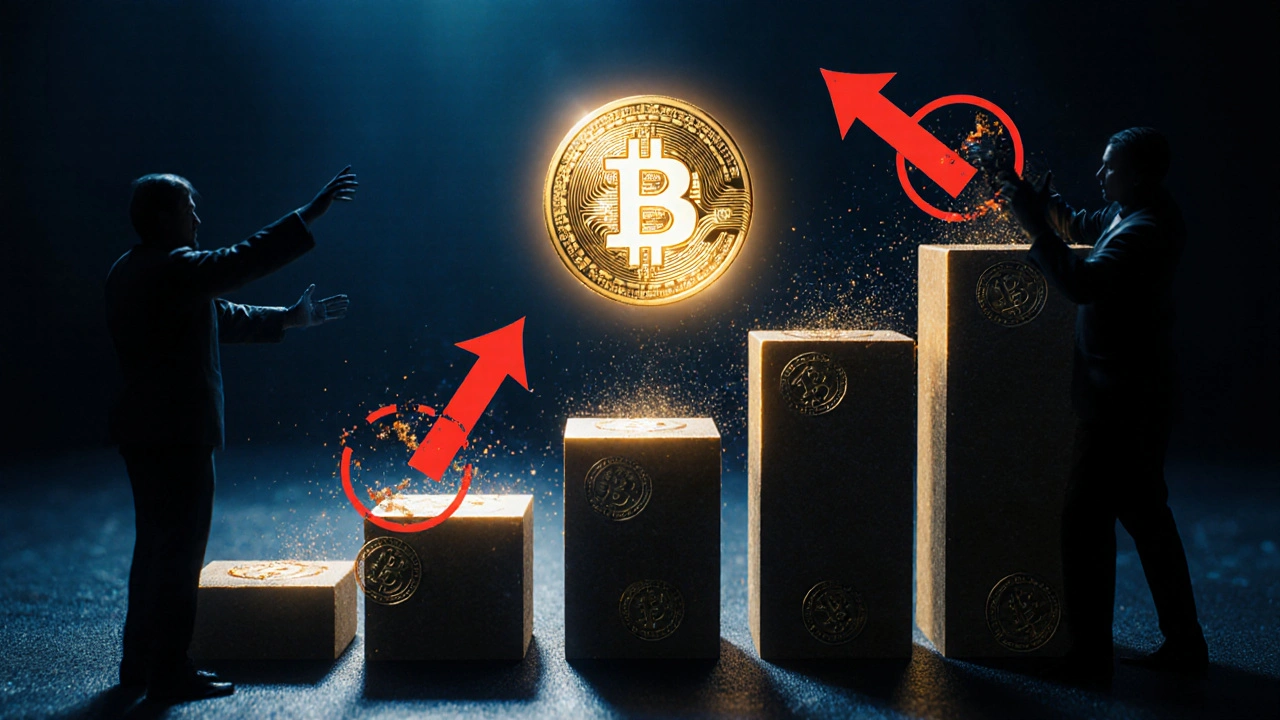When you send Bitcoin or Ethereum to someone, you expect it to arrive - and stay there. No one wants to wake up the next day and find out their payment vanished because someone reversed it. That’s where finality comes in. It’s not just a technical term. It’s the reason blockchain can be trusted to hold value, settle payments, and run apps without banks or middlemen. Without finality, crypto would be just a fancy spreadsheet with a chance of being erased.
What Finality Actually Means
Finality is the point where a transaction becomes permanent. Once you hit send, and finality is reached, no one - not even the miners, validators, or developers - can undo it. It’s locked in. This isn’t like PayPal or your bank, where a transaction can be reversed if someone claims fraud. In crypto, finality means irreversibility by design.Think of it like signing a contract with a notary. Once the notary stamps it, you can’t just tear it up and rewrite it. Blockchain finality works the same way, but instead of a notary, it’s a network of computers agreeing, over and over, that the transaction is valid.
Two Types of Finality: Probabilistic vs. Deterministic
Not all blockchains guarantee finality the same way. There are two main models, and they shape how fast, safe, and reliable your transactions feel.Probabilistic finality is used by Bitcoin and early Ethereum. Here, finality isn’t instant. It builds up over time. Each new block added after your transaction makes it harder - but never impossible - to reverse. Bitcoin says you’re safe after six confirmations. That’s about 60 minutes. Why six? Because after that many blocks, the chance of a reversal is less than one in a trillion. It’s not zero, but it’s close enough for most people.
Deterministic finality is different. Once your transaction is included in a block and validated by enough nodes, it’s done. No waiting. No “maybe.” Networks like BNB Chain, Avalanche, and Casper Network use this. They rely on Byzantine Fault Tolerance (BFT) consensus. If two-thirds of validators agree, the transaction is final - immediately. That’s why some chains can confirm payments in under three seconds.
How Major Chains Handle Finality Today
Here’s how the biggest networks stack up as of late 2025:
- Bitcoin: 6 confirmations ≈ 60 minutes. Still the gold standard for security, but painfully slow for everyday use.
- Ethereum (post-Merge): 12.8 minutes (2 epochs). After its switch to Proof-of-Stake in 2022, Ethereum stopped relying on mining and started using validators. Finality now comes every 12.8 minutes, and the Ethereum Foundation is working to cut that to 8 minutes by 2026.
- BNB Chain: Around 60 seconds. Uses Proof-of-Staked-Authority with BFT. Only 21 validators, but they vote fast. That’s why traders love it for swaps and DeFi.
- Avalanche: Under 3 seconds. Its unique consensus lets it finalize transactions faster than most banks can process a wire.
- Solana: 2-5 seconds. Handles up to 65,000 transactions per second, with finality baked into its design. Popular for NFTs and high-frequency apps.
- Polygon PoS: 30 minutes. Relies on checkpoints to Ethereum. So even though Polygon feels fast, you’re still waiting for Ethereum to finalize the root.

Why Finality Matters More Than You Think
It’s not just about speed. Finality affects security, money, and even regulation.
In 2022, the Nomad bridge hack cost users $190 million. Why? Because the bridge assumed finality on one chain when it hadn’t actually happened on another. One network thought a transaction was done. The other didn’t. The hackers exploited that gap. That’s a finality failure - and it’s not rare.
Chainalysis found that 12% of all cross-chain bridge hacks in 2023 came from wrong finality assumptions. That’s not a glitch. It’s a design flaw.
For exchanges, finality dictates how long they make you wait to withdraw. Coinbase requires 12 Bitcoin confirmations for large deposits - double what’s technically needed - because they can’t afford to lose a dollar to a reorg. Financial institutions like JPMorgan use 512 confirmations (over an hour) for external transfers. That’s not paranoia. That’s risk management.
And now, regulators are stepping in. The EU’s MiCA law, effective January 2025, says stablecoin issuers must ensure transactions finalize in under five minutes. If you’re building a crypto payment system in Europe, you can’t pick Bitcoin. You need something faster.
Layer 2s and the Finality Puzzle
Layer 2 solutions like Optimism and ZK-Rollups promise cheaper, faster transactions. But they don’t have their own finality. They ride on Ethereum’s back.
On Optimism, your transaction is “safe” after 5-10 minutes - meaning it’s included in a block. But it’s not “finalized” until Ethereum confirms it. That takes another 12.8 minutes. So total wait? Around 23 minutes. That’s faster than Bitcoin, but slower than native deterministic chains.
ZK-Rollups are even trickier. They bundle hundreds of transactions into one proof. That proof must be verified on Ethereum. Until that happens, your transaction isn’t final. Some providers offer “liveness guarantees” - but those aren’t the same as true finality.
Developers building dApps have to code around this. They can’t just assume “confirmed = done.” They need to check for L1 finality. Many apps now use custom RPC endpoints just to track when a transaction is truly final.

What’s Changing in 2025-2026
Finality isn’t static. It’s evolving.
Ethereum’s Prague upgrade (late 2024) introduced Verkle trees, which make state verification faster. That’s a step toward reducing finality time from 12.8 to 8 minutes. The goal? Single-slot finality - meaning every block is final as soon as it’s produced. That’s the holy grail.
BNB Chain’s opBNB testnet hit 0.3-second finality in April 2024. That’s faster than most credit card approvals. If it goes live, it could force other chains to rethink their speed limits.
And then there’s cross-chain finality. Right now, if you send crypto from Ethereum to Solana, you’re trusting two different systems to agree on what’s final. The Interchain Foundation is funding a $2.1 million project to create universal finality standards. Imagine a world where you don’t have to check five different block explorers to know your transaction is safe.
Why Developers Are Choosing Deterministic Finality
GitHub data from 2023 shows 63% of new dApp projects pick chains with deterministic finality. Why? Because developers hate uncertainty.
If you’re building a game where players trade NFTs, and the transaction takes 12 minutes to finalize, users get frustrated. They refresh. They cancel. They leave. If it’s done in 3 seconds, they don’t even notice the delay.
Same goes for DeFi. Liquidity pools, lending, and automated trading need speed. You can’t have a flash loan that takes 15 minutes to settle. The market moves too fast.
Deloitte’s 2023 survey found that 78% of enterprises building blockchain payment systems require finality under a minute. They’re not choosing Bitcoin. They’re choosing Avalanche, BNB Chain, or Solana.
Finality Isn’t Perfect - But It’s Getting Better
Even with all the progress, finality still has risks. The Blockchain Research Institute found 23 protocol vulnerabilities in 2023 tied to flawed finality assumptions. Eighty-seven percent of security auditors say it’s one of the top three issues in blockchain code.
But the trend is clear: networks that offer fast, reliable finality are winning. Users care. Developers care. Regulators care. Businesses care.
Bitcoin’s probabilistic model will always have a place - for long-term value storage, where security trumps speed. But for everything else - payments, apps, trading, DeFi - the future belongs to deterministic finality.
By 2027, the market for finality-optimized blockchain solutions is projected to hit $18.7 billion. That’s not just hype. That’s demand. People are tired of waiting. They want their crypto to work like cash - instant, final, and foolproof.
Finality isn’t just a feature. It’s the foundation of trust in crypto. And now, more than ever, the networks that get it right are the ones that will last.

